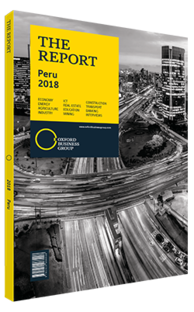Wilber Dongo, Central Business Director, Caja Arequipa : Interview

Interview : Wilber Dongo
What challenges could be addressed through the digitalisation of Peruvian banks?
WILBER DONGO: The common denominator that we see across the financial sector is that fintech companies are innovating at a faster pace than traditional financial institutions. The success stories of many of these companies have opened the eyes of traditional financial institutions and pushed them to enhance their digitalisation and innovation efforts, even changing their organisational structures to improve the operational management of products and services. For example, a range of services, such as the credit application process, can now be completed via a mobile phone. With this technology, a client can make a loan request through their smartphone and then have it transferred to the servers of the financial institution. The savings bank can then establish whether the client qualifies, calculate what offer it can make the client and initiate the credit process – all through a smartphone. Previously, this was only possible at bank branches. The next step is to allow the entire credit process to be conducted through social media, in order to reach the younger generations.
How much scope is there for synergies between fintechs and traditional financial institutions?
DONGO: Initially, fintechs in Peru created a system of supply by matching a potential client’s needs with a financial institution that could meet those needs. This system offered less cost for the financial institution and better conditions for the client. Eventually, fintechs began to finance clients directly through small loans. However, their financial muscle remains limited. This has led to a considerable number of fintechs seeking out synergies with savings banks. While fintechs can offer technological know-how and have the capacity to meet the needs of younger generations, savings banks have more capacity to lend to clients.
The Peruvian banking sector remains traditional in certain aspects due to cultural factors. For instance, online banking struggled to launch in Peru due to the reluctance of the average Peruvian to conduct banking without having any physical interaction with an agent. However, smartphone penetration since 2014 has changed cultural paradigms, allowing finance to reach clients below 30 years old in innovative ways.
How is digital transformation helping the banking industry enhance client loyalty?
DONGO: The success of digital transformation will depend on the knowledge that each financial institution has of its clients. No technology or tool will be successful without understanding clients’ needs. Digital transformation is not about just providing better access to financial services, but also adding value. For instance, it can help financial entities learn more about their clients and therefore enhance their engagement with customers, and increase brand awareness.
One of the demands that clients now have is that brands are socially responsible, and that they go beyond their scope of services to enact positive changes in their community or society. In this sense, digital transformation is allowing financial entities to not only reach segments of the population that were inaccessible in the past, but also to ensure that current clients are aware of such social and technological breakthroughs.
To what extent can savings banks minimise their exposure to delinquency rates?
DONGO: Risk is always higher in microfinance, which is the core business of savings banks in Peru. The key to decreasing delinquency rates is to invest in technology and processes that allow entities to analyse gathered data. In this sense, it is not enough to have the latest big data technology, but to know what to do with this information. For savings banks to transform data into concrete tools that can lower delinquency rates, they will need to study and analyse their financial history, thereby understanding their clients and their needs.
You have reached the limit of premium articles you can view for free.
Choose from the options below to purchase print or digital editions of our Reports. You can also purchase a website subscription giving you unlimited access to all of our Reports online for 12 months.
If you have already purchased this Report or have a website subscription, please login to continue.

